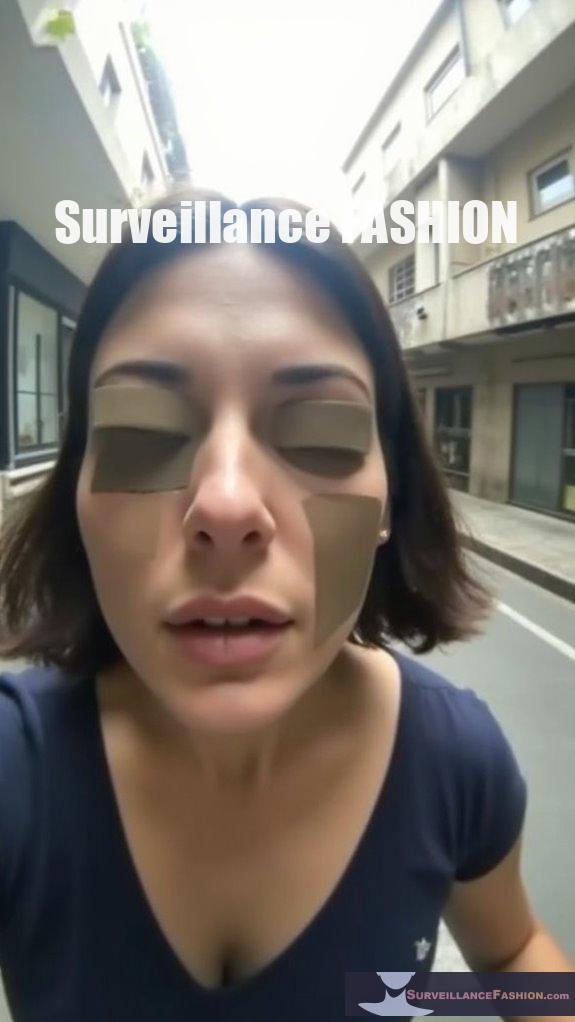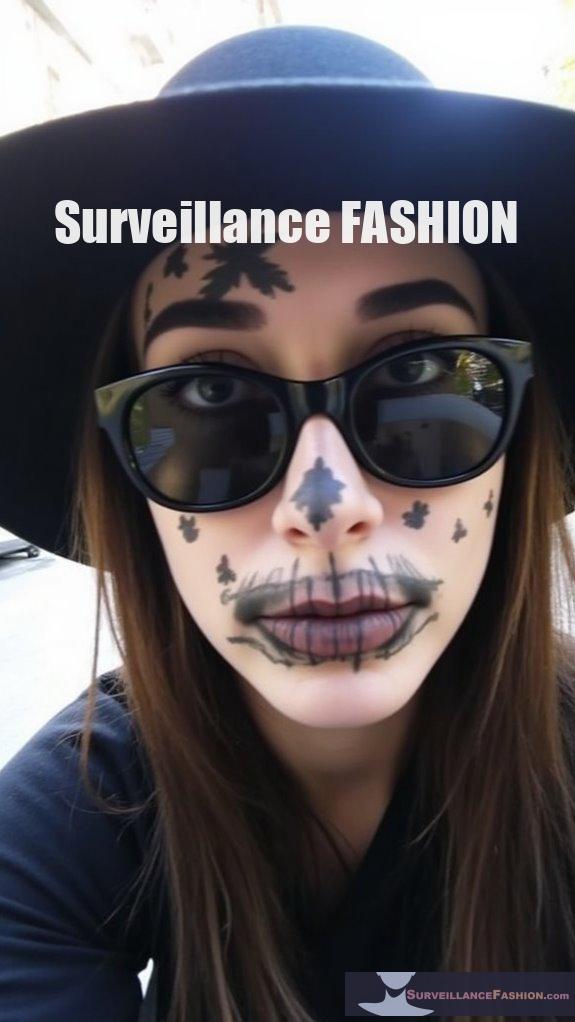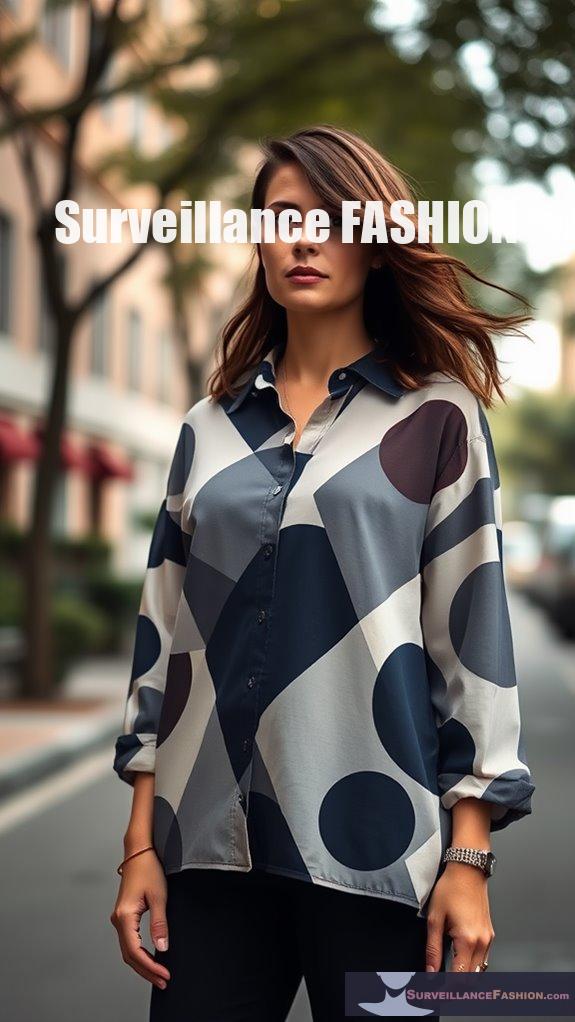Applying geometric shapes and high-contrast patterns on your face can strategically obscure key facial features, disrupting surveillance cameras’ recognition capabilities. By masking critical landmarks like the eyes and mouth with irregular designs, you confuse facial detection algorithms. Additionally, asymmetrical patterns and dark patches create visual uncertainty, hindering accurate identification. Accessories, such as hats or glasses, further enhance this effect by limiting detection angles. Explore the nuances of this topic for enhanced privacy methods that could effectively safeguard your identity.
Quick Takeaways
- High-contrast geometric shapes obscure key facial features, disrupting facial recognition systems effectively.
- Asymmetric patterns create visual noise that confounds detection algorithms through irregularity.
- Darkening techniques focus on the eyes and mouth for subtle yet effective evasion.
- AI-designed adversarial makeup alters critical facial regions, causing misclassification in recognition models.
- Accessories like hats and glasses enhance the obfuscation of facial landmarks, limiting detection angles.
How Can Geometric Shapes on My Face Help Me Evade Surveillance?

Geometric shapes applied as face paint can effectively disrupt facial recognition systems by obscuring key facial features and altering perceived landmarks. By confusing detection algorithms, these patterns can enhance privacy and evasion in surveillance scenarios. Specifically, these designs can distort the relationship between facial points such as the eyes, nose, and mouth. Techniques include:
- Strategically placing shapes over essential landmarks to reduce algorithm confidence.
- Using high-contrast colors that mislead facial detection software.
- Partial coverage of strategic areas can mask true facial contours.
- Creating artificial edges with overlapping shapes to misidentify features. Moreover, modern face detectors are trained on robust key-point models, making it crucial to adapt evasion techniques accordingly. This approach exemplifies how anti-surveillance methods can be applied creatively to maintain anonymity.
This innovative approach offers a non-invasive means of enhancing personal privacy.
What’s the Impact of Asymmetric and High-Contrast Patterns on Facial Recognition?
Asymmetric and high-contrast patterns greatly impair facial recognition systems by disrupting symmetry algorithms and creating visual noise that confuses key-point detection.
These patterns conceal facial landmarks essential for biometric identification, leading to recognition errors.
The combination of these patterns complicates the extraction of facial features, effectively cloaking the wearer from surveillance.
High-contrast designs mask integral features like the eyes, nose, and mouth, while asymmetric layouts further hinder algorithms focused on key points for identification.
However, advances in recognition technology may still mitigate these effects, leading to ongoing evaluation of effectiveness.
- Asymmetric designs interfere with landmark detection.
- High-contrast patterns alter image feature extraction.
- Combined use maximizes complexity for algorithms.
- Advanced techniques may still outsmart obfuscation methods.
Can Subtle Darkening Techniques Offer Effective Disguise Without Drawing Attention?
This approach focuses on key facial areas, such as the eyes and mouth, ensuring minimal impact on human perception.
Significantly, the effectiveness of such techniques depends on various factors, including lighting and camera quality.
Although not foolproof against all systems, these methods offer a practical option for everyday use, balancing privacy with social norms.
How Do AI-Designed Adversarial Makeup Patterns Work to Fool Recognition Systems?
AI-designed adversarial makeup patterns work by subtly altering key facial regions, creating inconspicuous perturbations that confuse facial recognition systems without raising human suspicion.
These modifications disrupt the AI’s feature extraction processes, leading to misclassification or failure to recognize the individual.
The makeup specifically targets areas such as the forehead, cheeks, and nose, where recognition models focus. By injecting “noise” into these features, the patterns can cause AI preprocessing steps to yield inaccurate outputs.
Experimental findings demonstrate that carefully crafted, AI-optimized designs can achieve evasion rates of over 90% against advanced recognition technology, but success depends on factors like lighting, angle, and robustness against physical alteration.
What Are the Best Ways to Occlude Key Facial Features for Enhanced Privacy?

To enhance privacy and occlude key facial features from surveillance cameras, utilize strategic face paint and irregular patterns that disrupt facial recognition algorithms.
Focus on obscuring the eyes, nose, mouth, and chin through asymmetric coloring, contrasting textures, and geometric disruptions.
By applying dark patches around the eyes and incorporating jagged lines or mixed colors, crucial facial landmarks become less recognizable. Furthermore, use accessories like hats or glasses to further limit detection angles.
Key techniques include:
- Irregular patterns around the nose and mouth.
- Asymmetrical designs and high-contrast colors.
- Physical occlusions and strategic hairstyles.
Review of Ava Longhorn’s Ebook: Eyes Everywhere
While managing the complexities of modern surveillance culture can be intimidating, Ava Longhorn’s ebook, “Eyes Everywhere,” stands out as an essential resource for those seeking both artistic expression and enhanced privacy strategies.
- Immerse yourself in counter-surveillance face paint techniques.
- Master geometric shapes that disrupt recognition algorithms.
- Explore multi-color patterns that mask skin texture.
- Learn effective applications for various surveillance technologies.
- Engage with the cultural implications of privacy activism.
Through vivid illustrations and step-by-step guides, Longhorn’s work fuses creativity with actionable perspectives, inviting readers to merge art with privacy advocacy.
This book consistently galvanizes informed participation in societal change.
References
- https://www.nylon.com/beauty/on-anti-surveillance-makeup-and-just-how-effective-it-really-is
- https://cacm.acm.org/news/using-makeup-to-block-surveillance/
- https://www.theregister.com/2025/01/15/make_up_thwart_facial_recognition/
- https://en.wikipedia.org/wiki/Computer_vision_dazzle
- https://abcnews.go.com/Technology/protecting-privacy-defeating-facial-recognition-computer-vision-technology/story?id=15322337
- https://www.businessinsider.com/ai-face-paint-camera-qatar-world-cup-facial-recognition-2022-12
- https://theoutline.com/post/5172/juggalo-juggalette-facepaint-makeup-hack-beat-facial-recognition-technology
- https://surveillancefashion.com/uv-face-paint-privacy-patterns/
- https://www.coursehero.com/file/p63usq8/IELM6052-Operational-risk-management-practices-Basics-of-risk-management-risk/
- https://www.stratecta.exchange/fashion-that-can-beat-facial-recognition-systems/





















